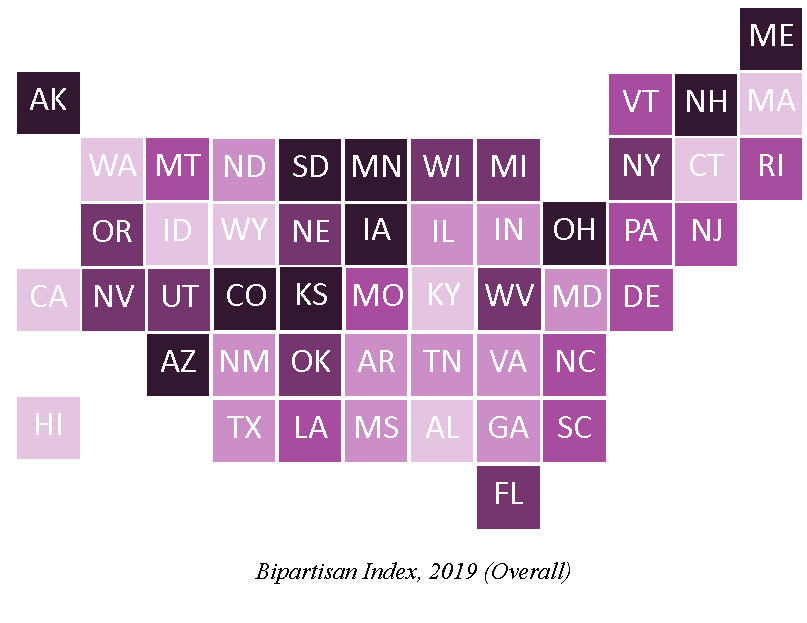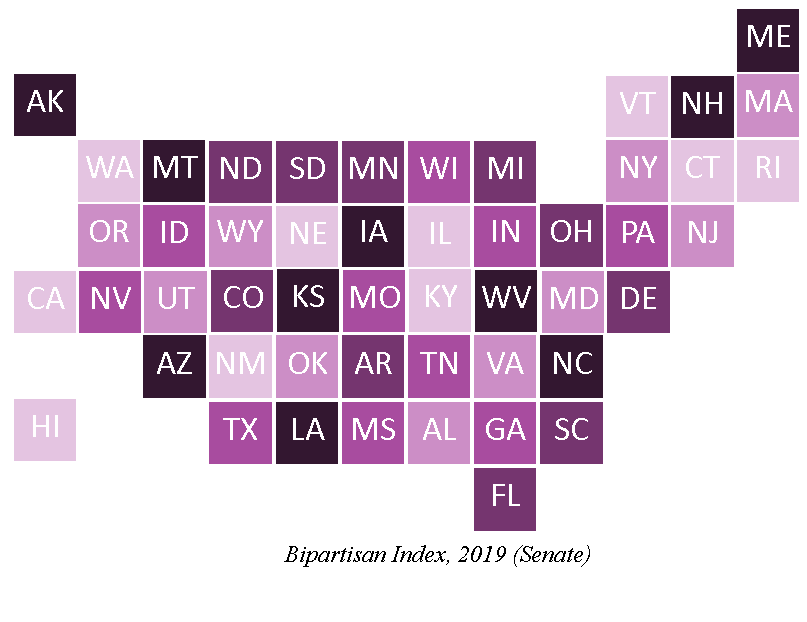Our Work
- Bipartisan Governance & Oversight
- Bipartisan Index
- 2023 House Scores
- 2023 Senate Scores
- 117th Congress Senate Scores
- 117th Congress House Scores
- 2021 Senate Scores
- 2021 House Scores
- 116th Congress Senate Scores
- 116th Congress House Scores
- 2019 Senate Scores
- 2019 House Scores
- Lifetime Senate Scores
- 115th Congress: Senate Scores
- 115th Congress: House Scores
- 2017 Senate Scores
- 2017 House Scores
- 114th Congress: Senate Scores
- 114th Congress: House Scores
- 2015 Senate Scores
- 2015 House Scores
- 113th Congress: Senate Scores
- 113th Congress: House Scores
- 103rd-112th Congresses: Senate Scores
- Age Study
- State Rankings
- Maps
- Bipartisan Representatives in Partisan Districts
- Statistics
- Methodology
- FAQs
- Press
- Oversight Hearing Index
- University Project for Bipartisan Collaboration
- Oversight Boot Camps
- Speeches
- Bipartisan Index
- Global Food Security
- WMD Nonproliferation
- Foreign Aid Effectiveness
Maps
Overview
Bipartisanship is Possible Anywhere
- View PDF
- See Data
- Overall Bipartisan State Rankings
- State Rankings in the Senate
- State Rankings in the House of Representatives
The more bipartisan the state’s congressional delegation, the darker the color.

Arizona topped the list as the most bipartisan state in the Senate, with Senators Kyrsten Sinema and Martha McSally ranked 5th and 6th respectively on the 2019 Bipartisan Index.

In the House of Representatives, smaller states like Vermont and Alaska, as well as more populous ones, such as Oregon and New York, ranked in the top 10 for most bipartisan.


![]()
